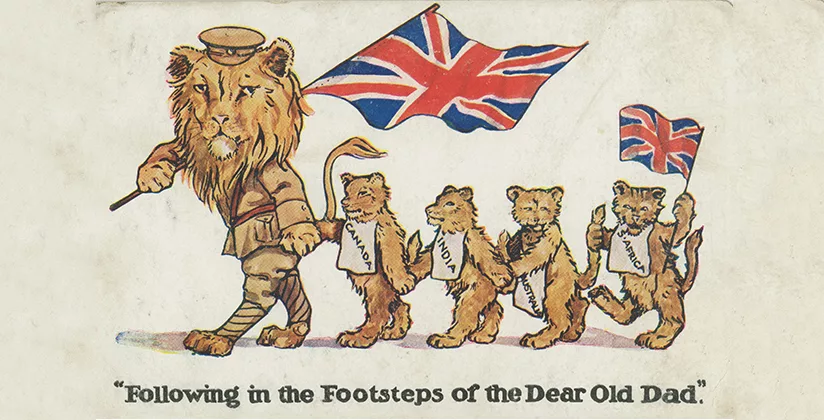Over the last few years there has been a resurgence of interest in the history and legacy of the British Empire. Views on the subject are split between two very distinct camps. One side holds that the Empire was “a jolly good thing” – advocates of this view include Niall Ferguson and Nigel Biggar, who dress themselves up as revisionists while bleating the same centuries-old myths about free trade and civilising missions. Those on the other side – including Kehinde Andrews and Shashi Tharoor – claim just as fervently that the Empire was unequivocally evil and wreaked pure havoc on all its colonies.
Sathnam Sanghera’s new book ignores the two factions and aims to provide as objective an account of the Empire as possible. From the preface onwards he distances himself from the ongoing “culture wars”, and claims that colonial history is so complex that it can never conclusively be proven to have been either “good” or “bad”. All that can be done, he argues, is to grasp the huge scope of imperial legacies; removing them from the world would be akin to “getting the ghee out of a breakfast-time masala omelette”.
Empireworld is exhaustively researched. 200 of its 450 pages are taken up by bibliography, notes and index, though in places it reads more like a travelogue than a piece of historical writing. We are treated variously to Sanghera at Kew Gardens, Sanghera having omelettes for breakfast, Sanghera getting his first pedicure, Sanghera meeting influencers at 5-star hotels, and so on. The glib, chatty prose – especially when sharing a chapter with brutal accounts of slavery, indenturement and settler violence – also feels incongruous.
Yet once you look at the substance of the book, there is no doubting its power. Sanghera’s evidence includes first-hand accounts, newspaper records, history books, interviews, and naked statistics that speak for themselves. (During the Boer War, 14.5% of the entire Boer population, mostly children, were killed in British concentration camps).
The chapter on “The Colour Line” is especially insightful. Allowing for the usual objections – such as how the concept of “race” barely existed before the nineteenth century, and how Britain was always “theoretically” non-racist and pro-equality – Sanghera explores the lasting racial tensions that the British fomented in almost all of their colonies. A disgusting quote is given from Winston Churchill’s testimony to the Peel Commission on Palestine: “I do not admit that the dog in the manger has the final right to the manger, even though he may have lain there for a very long time”. Then there were the blatant double standards in law enforcement which pervaded all colonial administrations. Sanghera gives some especially sickening accounts of violent settlers committing the worst atrocities and being let off scot-free by the courts of their countrymen. It seems to make a mockery of claims of “rule of law”, but he points out that for all the land-grabbing that was legalised by “land belonging to no one” clauses, there were also constant legal attempts to prevent atrocities and corruption (e.g. the impeachment of Warren Hastings). Sanghera makes a constant effort to show both sides.
Aside from the well-known physical and economic legacies of the Empire, some attention is given to the lesser-known environmental impacts. He uses accounts of climate disasters ranging from the 1770 Indian famine to the 2022 floods in Pakistan to show how the Empire left a carbon footprint for the ages. At the same time, he insists, again trying to show both sides, another result of the Empire was environmental conservation. Often, the very people who hunted wild animals to the verge of extinction went on to set up foundations for the preservation of endangered species. On a similar note, showing the dark side of good causes, there is a section of the book detailing the historically fine line between charity organisations and colonial missionaries. Even in recent conflicts in Afghanistan and Iraq, the line has never been unblurred.
It is impossible to cover every detail of Empireworld in a short review – just as it is impossible to cover every detail of British colonialism in 250 pages.
Judging purely by what is included, Sanghera may be right to reject the reductive “balance sheet” approach to the Empire’s legacy. At times, however – such as when he equates Niall Ferguson, a downright apologist for colonialism, with Shashi Tharoor, whose Inglorious Empire (2017) is one of the most persuasively written and accessible books on the subject – there is a feeling that one side does have the moral high ground, and that Sanghera’s BBC-style attempt at objectivity may in fact distort our understanding of Empire. If ever one side of the colonial legacy had to be prioritised over the other, it would have to be the “bad” over the “good”.
Without confronting the wrongs of the past, the wrongs of the present will go on unabated. It is a fact that the British Empire’s loudest defenders today are the very people who cheer on the neo-colonial projects of the twenty-first century. (Tony Blair, a few years before invading formerly British-mandated Iraq, wrote a speech proclaiming: “I’m proud of the British Empire”). The facts should be known and history should be confronted. That is why Empireworld a necessary handbook – if not the very best of its kind.


